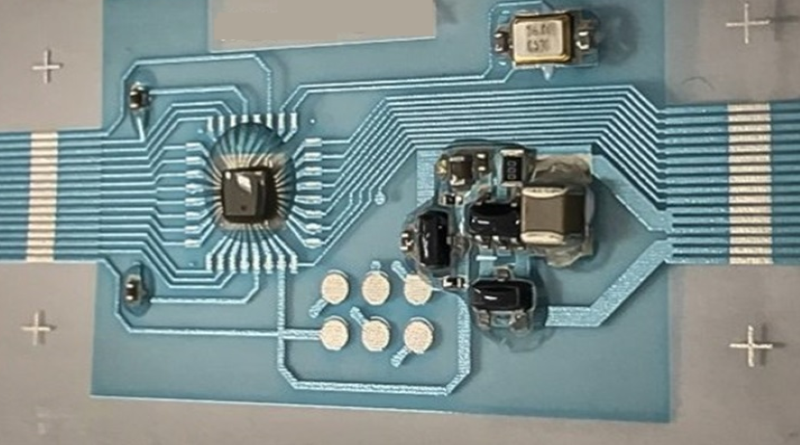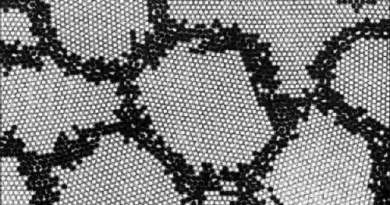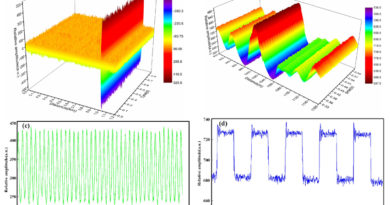Spin Harnesing For Future Electronics
B. C. Rai, Sujeet Kumar, K. P. Yadav, Monalisa*and A. Yadav**
PG Centre, Department of Physics
College of Commerce, Patna, INDIA
*B. Tech (EEE), VVIT, Purnea, INDIA
**Director, VVIT, Purnea, INDIA
(bcraiphy@gmail.com)
Abstract
Electronics today completely relies on the charge and its transport, completely ignoring, or ignorant of, the electron spin. Spin of electron provides us an unprecedented chance and new starting point to explore the future of modern semiconductor and information industry. It needs materials as source of spin polarized carriers or electron spins to form a spin current, coherent transport of the moving electron spin and tunneling through the interfaces and long spin coherence time of carriers to implement the desirable operations. The mechanisms which break the conservation of a spin current include magnetic impurities scattering, spin-orbit coupling, and nuclear spin and consequently a spin current cannot be transported for a long distance. Metallic spin- device has made significant progress and spin injection in diluted magnetic semiconductor has been enhanced significantly. Exploiting the subtle quantum property of the electrons to develop a new generation of electronic devices needs the motivation, understanding physical fundamentals, and recent experimental progress which form the essence of this review.
Key Words:
Spin current, spin injection.
Introduction
The spin-dependent electron transport phenomena in solid-state devices came to fore research in 1980s, evidenced by spin-polarized electron injection from a ferromagnetic metal to a normal metal [1] and the discovery of giant magneto-resistance (GMR) [2 and 3] . These supported the idea that were formed upon the ferromagnetic –to-superconducting interface tunneling experiments of Meservey and Tedrow, and initial experiments on magnetic tunnel junctions by Julliere [4] . A theoretical proposal of a spin field-effect-transistor came in 1990 by Datta and Das [5]. For the carriers of charge with spin, the working principle of conventional semiconductor devices is practically unaffected by spin because there is no net imbalance between spins pointing in different directions (‘up’ and ‘down’, for example) in the environment in which they are transported. However, spin imbalance could be produced by changing the environment and be useful in a wide range of applications, from computer hard drives and magnetic random access memories, to innovative technologies, such as spin transistors, spin-lasers, or even in spin- based quantum computing.
In most cases the spin injection means spin polarized current injection. There are three steps needed in spin-based devices of future technology: spin injection, spin manipulation by external field and spin detection for measuring the physical consequences of spin coherent states in proposed devices.
Spin current theory
The theory of spin polarized current initiated with the understanding of GMR in multilayer ferromagnetic thin films. GMR marked as much larger in these than Magneto-resistance (MR) in metal, indicates that the orientation of magnetization in ferromagnetic layers determine the mechanism of spin-dependent scattering. When the magnetizations in the two layers are parallel to each other the mean free path increases. In the opposite case, when the magnetizations in the two layers are antiparallel to each other the mean free path decreases. As a result, the resistance of the system varies with the relative orientation of magnetizations in the two ferromagnetic layers. A spin current is a second-rank pseudotensor, given by not only the flow direction of electron spin but also spin orientation, different spin orientations possibly producing different physical effects. The coupling between the spin current and system crystal is rather weak, and has no direct coupling with phonon. This is one of the advantages of the spin current.
The spin current concept initiated the era of spin-dependent devices. Soon after, a new event in the name of the tunneling magneto-resistance (TMR) was observed and was much larger than GMR. It was put to extensive applications in commercial products. In the case of new type of spin field effect transistor, it is proposed that Datta-Das transistor and conventional transistor have almost the same structure; however, the former uses the gate voltage to control the spin orientation of electron, and the later uses the gate voltage to change the direction of motion of electrons. The energy needed to change the spin orientation is much smaller, and the time is much shorter, and the efficiency is much higher.
The proposal has not actualized in laboratory. The key characteristics standing as hurdles are : (1) it needs materials as source of spin polarized carriers or electron spins to form a spin current ; (2) the moving electron spin can transport coherently and tunnel through the interfaces; (3) the spin coherence time of carriers is long enough to implement the desirable operations.
There are several mechanisms which break the conservation of a spin current, such as magnetic impurities scattering, spin-orbit coupling, and nuclear spin; a spin current cannot be transported for a long distance. It puts a limit on possible technological applications. For a typical semiconductor material, the distance of spin-current transport is about several to hundred microns. Recent experimental data, however, indicates the spin coherence length can be tuned by an external field or become a quite long along some axis in new materials.
Development in Experiments
Spin lifetimes of conduction electrons in metals are relatively short (less than 1 nanosecond), and is too small on technologically relevant timescales. Recent experiments, such as the current-induced magnetization procession and spin Hall Effect in metals and semiconductors, that need coherence of electron spin, have shown that the spin coherence lengths of electrons in semiconductors are much longer than those in metal, and we expect that more applications can be realized in semiconductors. In confined structures, spin dephasing can be suppressed, leading to spin lifetimes of milliseconds in semiconductor quantum dots at low temperatures. By studying new materials and decay mechanisms, we hope to improve the performance of practical devices as well as solving more fundamental problems of condensed matter physics and new electronics.
- Just a few years back IBM scientists have mapped the creation of persistent spin helices of synchronized electrons persisting for more than a nanosecond. This is a 30-fold increase from the previously observed results and is longer than the duration of a modern processor clock cycle, and is looked as encouraging for using electron spins for information processing [6].
- Magnetic field sensors can be developed using spin-currents. For this, a net spin polarization can be achieved either through creating an equilibrium energy splitting between spin up and spin down such as putting a material in a large magnetic field (using Zeeman Effect) or the exchange energy present in a ferromagnet; or forcing the system out of equilibrium. The simplest method of generating a spin-polarized current in a metal is to pass the current through a ferromagnetic material and GMR indicates magnetism. Another way is to use a typical GMR device that consists of at least two layers of ferromagnetic materials separated by a spacer layer. When the two magnetization vectors of the ferromagnetic layers are aligned, the electrical resistance will be lower (so a higher current flows at constant voltage) than if the ferromagnetic layers are anti-aligned. This constitutes a magnetic field sensor. Two variants of GMR have been applied in devices: (1) current-in-plane (CIP), where the electric current flows parallel to the layers and (2) current-perpendicular-to-plane (CPP), where the electric current flows in a direction perpendicular to the layers.
- Other metals-based spin- devices:
- Tunnel magneto-resistance (TMR), where CPP transport is achieved by using quantum-mechanical tunneling of electrons through a thin insulator separating ferromagnetic layers.
- Spin-transfer torque, where a current of spin-polarized electrons is used to control the magnetization direction of ferromagnetic electrodes in the device.
- Spin-wave logic devices utilize the phase to carry information. Interference and spin-wave scattering are utilized to perform logic operations.
- Recent research in spin field has focused on the study of magnetism in doped semiconductors. Examples include experimental and computational investigations in Dilute magnetic oxides (DMOs) Sn-oxide, or ZnO based DMOs and TiO2-based DMOs [7, 8], non-oxide ferromagnetic semiconductor sources (like Ga Mn As),etc.[9-11] .
- Spin based population inversion: Spin-polarized lasers can, potentially, offer lower threshold currents and reach higher emission intensities. To achieve spin-polarized lasing emission a material should possess a slow spin relaxation and a high propensity to be injected with spin-polarized currents. These stringent requirements, so far, have limited the choice of candidate materials for spin-lasers.
Recently these requirements have been relaxed by using a new self-polarized spin mechanism. Here Fe3O4 nanoparticles are coupled to GaN- nanorods to form an energy-band structure that induces the selective charge transfer of electrons with opposite spins. In turn, this selection mechanism generates the population imbalance between spin-up and spin-down electrons in the emitter’s energy levels without an external bias. Using this principle, laser emission from GaN Nano-rods with spin polarization up to 28.2% at room temperature under a low magnetic field of 0.35 T has been possible, without requiring optical pumping with circularly polarized light or electrical pumping with magnetic electrodes. Using such mechanism, potentially a wide range of semiconductors can be used as spin-nano-lasers [12].
- Spin detection in semiconductors: The following techniques are used in the detection of spin. Faraday or Kerr rotation of transmitted and reflected photons [13], Circular polarization analysis of electroluminescence [14], Nonlocal spin valve (adapted from Johnson and Silsbee’s work with metals)[15] and Ballistic spin filtering[16]. The latter technique resolved the difficulties due to lack of spin-orbit interaction and materials issues to achieve spin transport in silicon [17].
- Spin transistor: using spin-polarized electrical injection a spin-based transistor having advantages over MOSFET devices such as steeper sub-threshold slope may be developed and Magnetic-tunnel transistor can be devised.
- Ferromagnetic versus Antiferromagnetic Storage Media: In ferromagnetic storage, material the bits 0 and 1are in use (the usual definition implies 0 for ‘magnetization upwards’, 1 for ‘magnetization downwards’). Recently antiferromagnetic storage media have been studied, where one may define 0 for ‘vertically-alternating spin configuration’ and 1 for ‘horizontally-alternating spin configuration” (This corresponds mathematically to the transition from the rotation group SO (3) to its relativistic covering, the “double group” SU (2)).The main advantages of using antiferromagnetic materials lie in their non-sensitivity against perturbations by stray fields, and shorter switching times.
CONCLUSION
In the past few years studies of spin current has emerged hot for device designs. It is in infancy as regards to efficiently generate, manipulate and detect spin current. Metallic spin- device has made significant progress and spin injection in diluted magnetic semiconductor has been enhanced significantly. Spin based devices include not only ferromagnetic but anti-ferromagnetic materials also.
References
- Johnson, M.; Silsbee, R. H. (1985). “Interfacial charge-spin coupling: Injection and detection of spin magnetization in metals”. Physical Review Letters 55 (17): 1790–1793.
- Baibich, M. N.; Broto, J. M.; Fert, A.; Nguyen Van Dau, F. N.; Petroff, F.; Etienne, P.; Creuzet, G.; Friederich, A.; Chazelas, J. (1988). “Giant Magnetoresistance of (001)Fe/(001)Cr Magnetic Superlattices”. Physical Review Letters 61 (21): 2472–2475.
- Binasch, G.; Grünberg, P.; Saurenbach, F.; Zinn, W. (1989). “Enhanced magnetoresistance in layered magnetic structures with antiferromagnetic interlayer exchange”. Physical Review B 39 (7): 4828.
- Julliere, M. (1975). “Tunneling between ferromagnetic films”. Physics Letters A 54 (3): 225–201
- Datta, S. and Das, B. (1990). “Electronic analog of the electrooptic modulator”. Applied Physics Letters 56 (7): 665–667.
- Walser, M.; Reichl, C.; Wegscheider, W. and Salis, G. (2012). “Direct mapping of the formation of a persistent spin helix”. Nature Physics 8(10): 757.
- Assadi, M.H.N; Hanaor, D.A.H (2013). “Theoretical study on copper’s energetics and magnetism in TiO2 polymorphs” Journal of Applied Physics 113 (23): 233913. arXiv:1304.1854
- Ogale, S.B (2010). “Dilute doping, defects, and ferromagnetism in metal oxide systems.”. Advanced Materials 22 (29): 3125–3155.
- Jonker, B.; Park, Y.; Bennett, B.; Cheong, H.; Kioseoglou, G.; Petrou, A. (2000). “Robust electrical spin injection into a semiconductor heterostructure”. Physical Review B 62 (12): 8180.
- Hanbicki, A. T.; Jonker, B. T.; Itskos, G.; Kioseoglou, G.;
Petrou, A. (2002). “Efficient electrical spin injection from a
magnetic metal/tunnel barrier contact into a semiconductor”. Applied
Physics Letters 80 (7): 1240.
- Jiang, X.; Wang, R.; Van Dijken, S.; Shelby, R.; MacFarlane, R.; Solomon, G.; Harris, J.; Parkin, S. (2003). “Optical Detection of Hot-Electron Spin Injection into GaAs from a Magnetic Tunnel Transistor Source”. Physical Review Letters 90 (25).
- Chen, J., Wong, T., et al (2014).‘Self-polarized spin-nanolasers’. Nature Nanotechnology, 9, 845-850.
- Kikkawa, J.; Awschalom, D. (1998). “Resonant Spin Amplification in n-Type GaAs”. Physical Review Letters 80 (19): 4313.
- Jonker, Berend T. ‘Polarized optical emission due to decay or recombination of spin-polarized injected carriers’ – US Patent 5874749. Issued on 23 February 1999.
- Lou, X.; Adelmann, C.; Crooker, S. A.; Garlid, E. S.; Zhang, J.; Reddy, K. S. M.; Flexner, S. D.; Palmstrøm, C. J.; Crowell, P. A. (2007). “Electrical detection of spin transport in lateral ferromagnet–semiconductor devices”. Nature Physics 3 (3): 197.
- Appelbaum, I.; Huang, B.; Monsma, D. J. (2007). “Electronic measurement and control of spin transport in silicon”. Nature 447 (7142): 295–298.
- Žutić, I.; Fabian, J. (2007). “Spintronics: Silicon twists”. Nature 447 (7142): 268–269.



